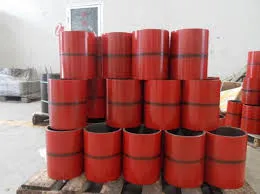- Afrikaans
- Albanian
- Amharic
- Arabic
- Armenian
- Azerbaijani
- Basque
- Belarusian
- Bengali
- Bosnian
- Bulgarian
- Catalan
- Cebuano
- Corsican
- Croatian
- Czech
- Danish
- Dutch
- English
- Esperanto
- Estonian
- Finnish
- French
- Frisian
- Galician
- Georgian
- German
- Greek
- Gujarati
- Haitian Creole
- hausa
- hawaiian
- Hebrew
- Hindi
- Miao
- Hungarian
- Icelandic
- igbo
- Indonesian
- irish
- Italian
- Japanese
- Javanese
- Kannada
- kazakh
- Khmer
- Rwandese
- Korean
- Kurdish
- Kyrgyz
- Lao
- Latin
- Latvian
- Lithuanian
- Luxembourgish
- Macedonian
- Malgashi
- Malay
- Malayalam
- Maltese
- Maori
- Marathi
- Mongolian
- Myanmar
- Nepali
- Norwegian
- Norwegian
- Occitan
- Pashto
- Persian
- Polish
- Portuguese
- Punjabi
- Romanian
- Russian
- Samoan
- Scottish Gaelic
- Serbian
- Sesotho
- Shona
- Sindhi
- Sinhala
- Slovak
- Slovenian
- Somali
- Spanish
- Sundanese
- Swahili
- Swedish
- Tagalog
- Tajik
- Tamil
- Tatar
- Telugu
- Thai
- Turkish
- Turkmen
- Ukrainian
- Urdu
- Uighur
- Uzbek
- Vietnamese
- Welsh
- Bantu
- Yiddish
- Yoruba
- Zulu
coupling for tubing
Coupling for Tubing An Essential Component in Oil and Gas Operations
In the oil and gas industry, the efficient transport of hydrocarbons from underground reservoirs to the surface is crucial. One of the key components that facilitate this transportation is the coupling for tubing, which plays a vital role in ensuring the integrity and reliability of well operations. This article delves into the significance of coupling for tubing, its types, applications, and best practices.
Understanding Tubing Couplings
Tubing couplings are mechanical devices used to connect two lengths of tubular goods, commonly referred to as tubing, in oil and gas wells. These couplings serve to provide a secure connection between sections of tubing, allowing for the safe and efficient extraction of oil and gas. Typically made from high-strength steel, couplings must withstand significant internal pressures and external forces during operations.
Types of Tubing Couplings
There are several types of tubing couplings, each designed for specific applications
1. Standard Couplings These are the most common type, used primarily in conventional drilling operations. They are designed to create a tight seal and support the weight of the tubing.
2. Premium Couplings Engineered for more demanding conditions, premium couplings feature advanced designs and materials that enhance performance, especially in high-pressure and high-temperature environments.
3. Specialty Couplings These include couplings designed for specific applications, such as sour gas environments or deep-water drilling, which require unique materials and engineering to combat corrosion or extreme conditions.
Applications in Oil and Gas Operations
coupling for tubing

Couplings are widely utilized in various stages of oil and gas operations, including exploration, drilling, and production. During the drilling phase, couplings connect drill pipes and tubing, facilitating drilling fluid circulation and the transport of cuttings to the surface. In production, these couplings ensure a reliable connection between tubing segments, facilitating the flow of hydrocarbons to processing facilities.
Given the high stakes in the oil and gas industry, ensuring the integrity of these couplings is paramount. Broken or failed couplings can lead to leaks, blowouts, and other catastrophic failures, posing risks to both personnel and the environment.
Best Practices for Coupling Usage
To maximize the performance and lifespan of tubing couplings, operators should adhere to several best practices
1. Proper Installation Follow manufacturer guidelines for installation to ensure optimal performance. This includes using the correct tools and techniques for threading and torqueing.
2. Regular Inspections Scheduled inspections of couplings can identify wear, corrosion, or other issues before they lead to failure. Ultrasonic testing and magnetic particle inspections are effective methods for assessing integrity.
3. Material Selection Choosing the right material for couplings based on the specific environmental conditions of the well can significantly enhance their longevity and reliability.
4. Training and Education Ensuring that personnel are trained in the proper handling and installation of couplings can prevent mistakes that could lead to failures.
Conclusion
In summary, coupling for tubing is an essential component in the oil and gas industry, ensuring the safe and efficient transport of hydrocarbons. Understanding the types and applications of these couplings, along with implementing best practices, can mitigate risks and enhance operational efficiency. As the industry continues to evolve with new technologies and methods, the importance of reliable coupling systems will remain a cornerstone of successful oil and gas operations. Through ongoing innovation and adherence to safety standards, operators can ensure the integrity and productivity of their wells, ultimately contributing to the reliable supply of energy that fuels modern society.
-
Tubing Pup Joints: Essential Components for Oil and Gas OperationsNewsJul.10,2025
-
Pup Joints: Essential Components for Reliable Drilling OperationsNewsJul.10,2025
-
Pipe Couplings: Connecting Your World EfficientlyNewsJul.10,2025
-
Mastering Oilfield Operations with Quality Tubing and CasingNewsJul.10,2025
-
High-Quality Casing Couplings for Every NeedNewsJul.10,2025
-
Boost Your Drilling Efficiency with Premium Crossover Tools & Seating NipplesNewsJul.10,2025







